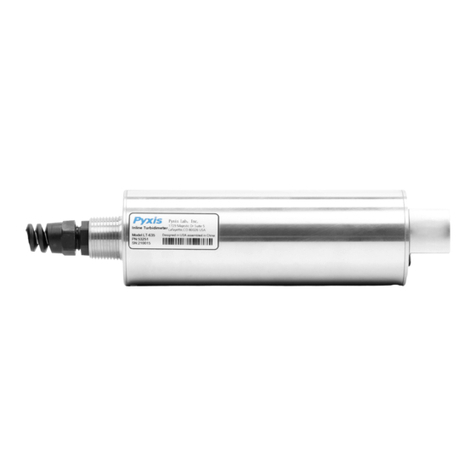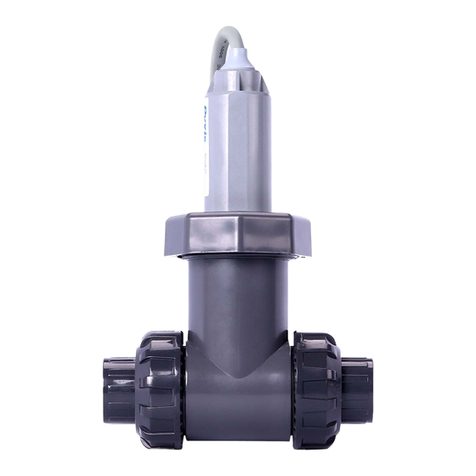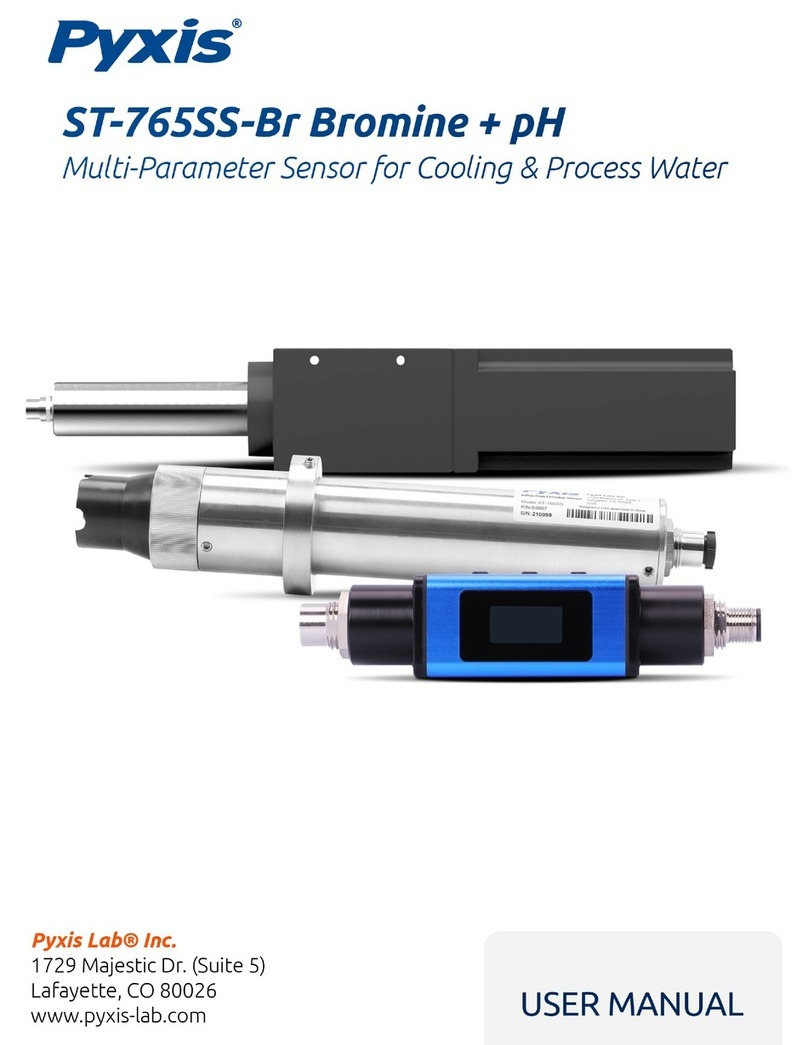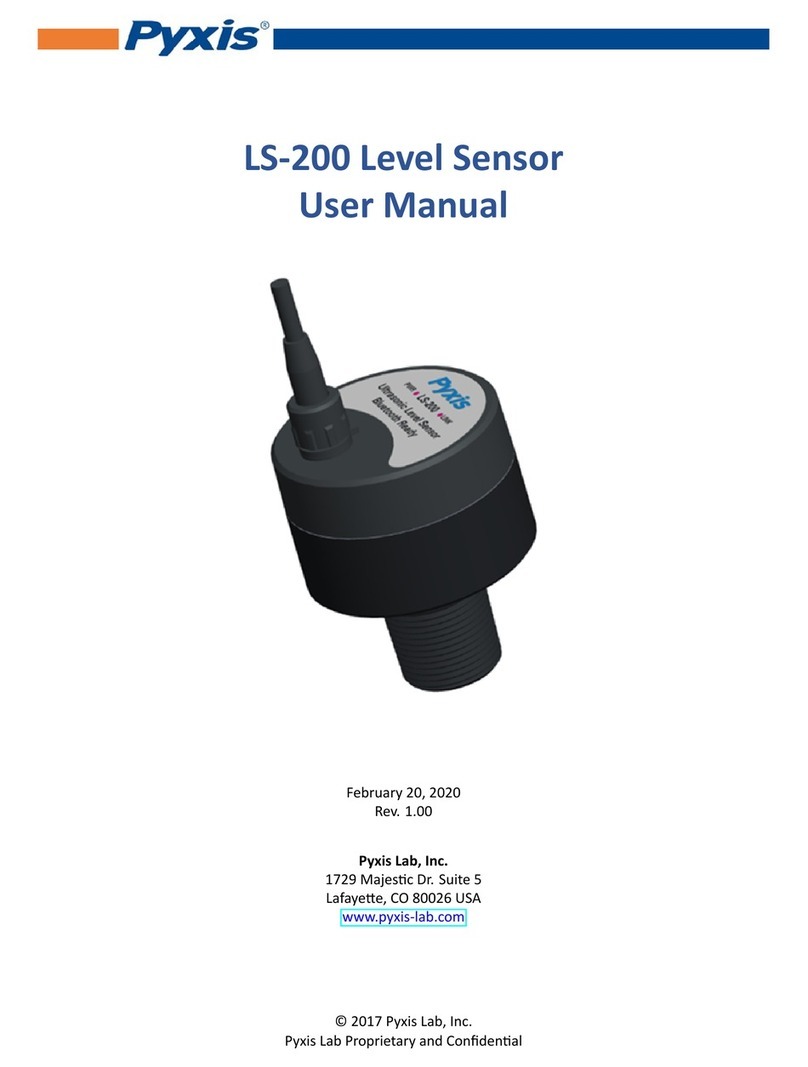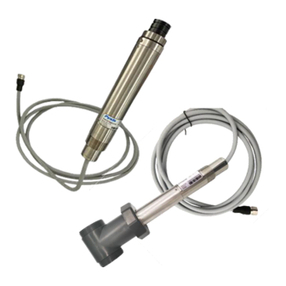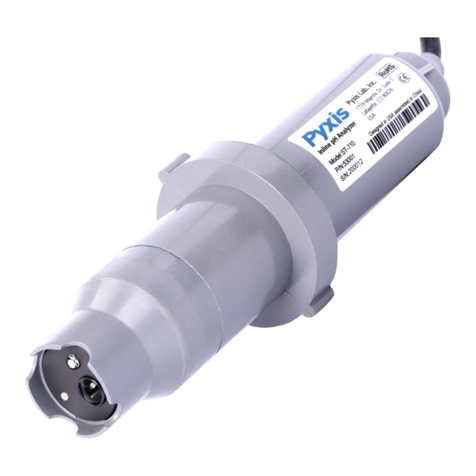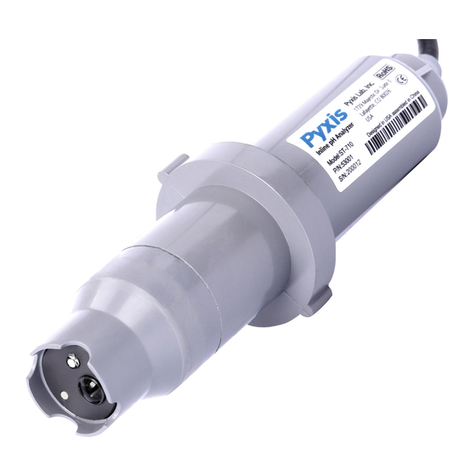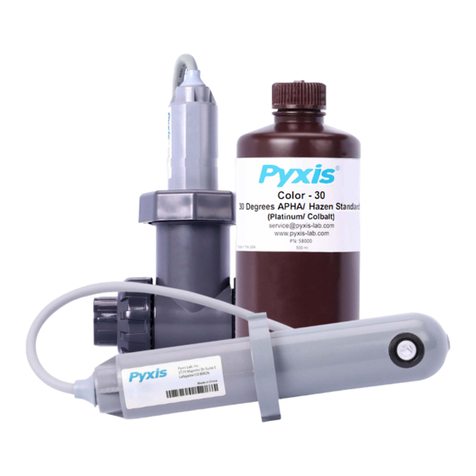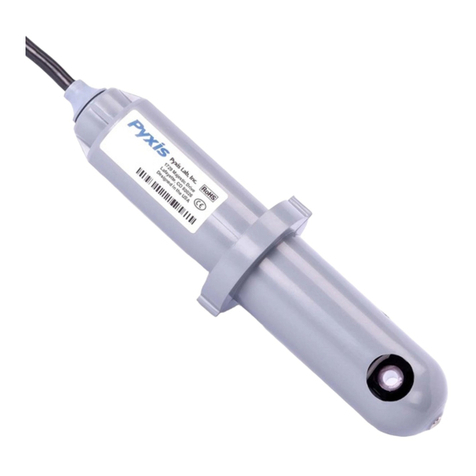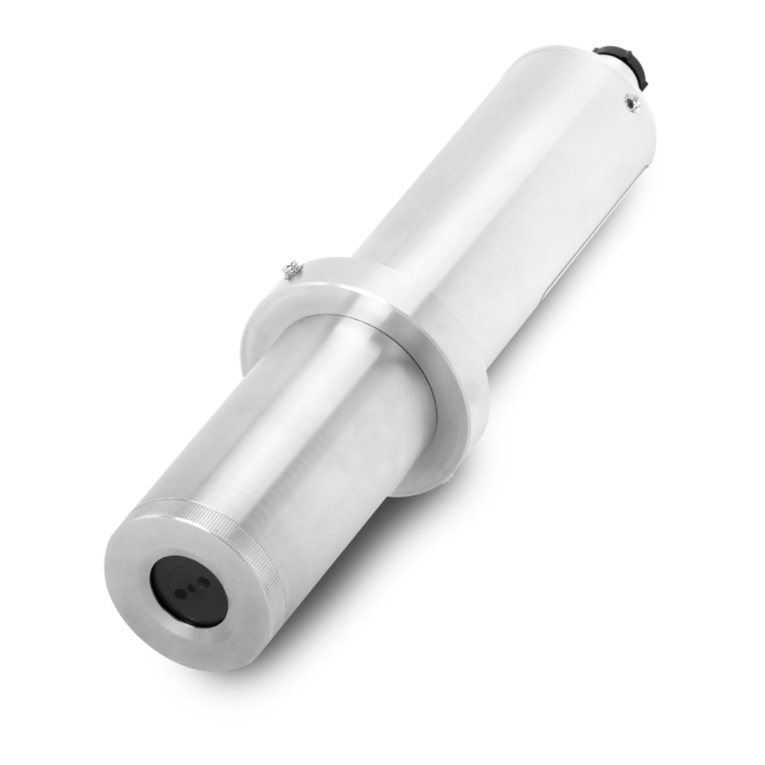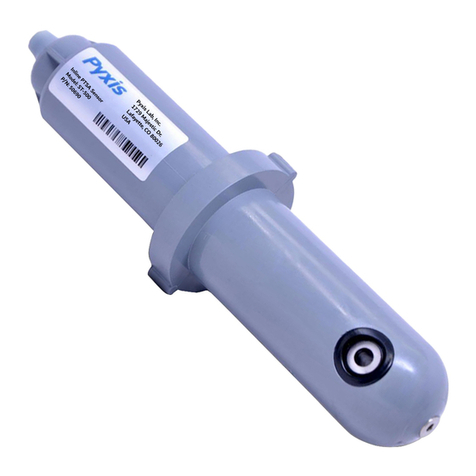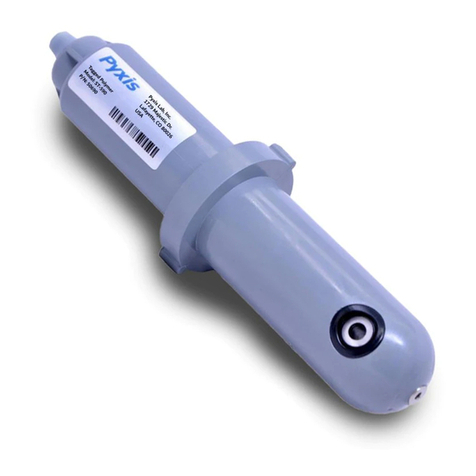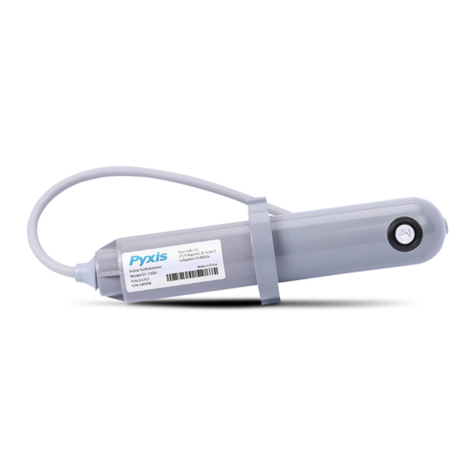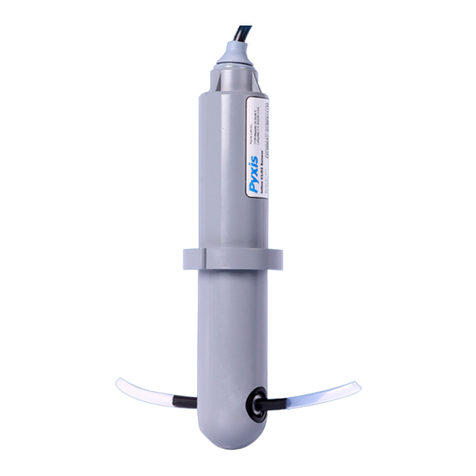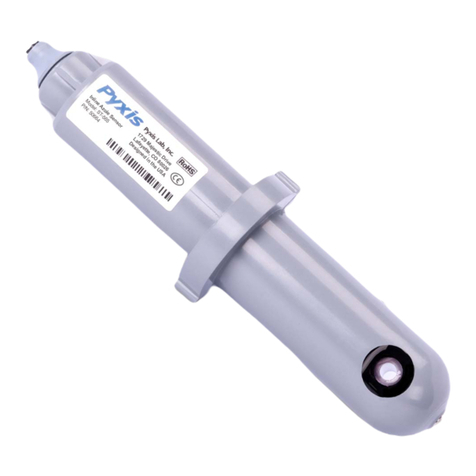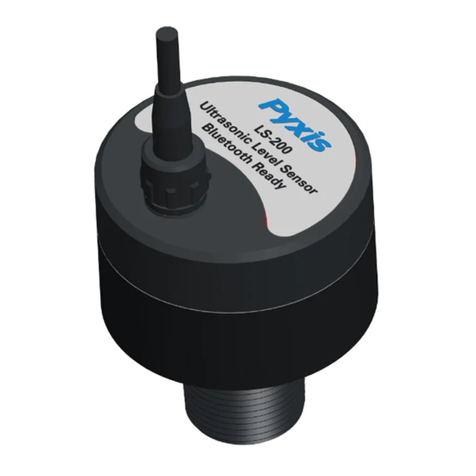
Warranty Informaon
Condenality
The informaon contained in this manual may be condenal and proprietary and is the property of Pyxis
Lab, Inc. Informaon disclosed herein shall not be used to manufacture, construct, or otherwise reproduce
the goods described. Informaon disclosed herein shall not be disclosed to others or made public in any
manner without the express wrien consent of Pyxis Lab, Inc.
Standard Limited Warranty
Pyxis Lab warrants its products for defects in materials and workmanship. Pyxis Lab will, at its opon, repair
or replace instrument components that prove to be defecve with new or remanufactured components
(i.e., equivalent to new). The warranty set forth is exclusive and no other warranty, whether wrien or oral,
is expressed or implied.
Warranty Term
The Pyxis warranty term is thirteen (13) months ex-works. In no event shall the standard limited warranty
coverage extend beyond thirteen (13) months from original shipment date.
Warranty Service
Damaged or dysfunconal instruments may be returned to Pyxis for repair or replacement. In some in-
stances, replacement instruments may be available for short duraon loan or lease.
Pyxis warrants that any labor services provided shall conform to the reasonable standards of technical com-
petency and performance eecve at the me of delivery. All service intervenons are to be reviewed and
authorized as correct and complete at the compleon of the service by a customer representave, or des-
ignate. Pyxis warrants these services for 30 days aer the authorizaon and will correct any qualifying
deciency in labor provided that the labor service deciency is exactly related to the originang event. No
other remedy, other than the provision of labor services, may be applicable.
Repair components (parts and materials), but not consumables, provided during a repair, or purchased
individually, are warranted for 90 days ex-works for materials and workmanship. In no event will the in-
corporaon of a warranted repair component into an instrument extend the whole instrument’s warranty
beyond its original term.
Warranty Shipping
A Repair Authorizaon (RA) Number must be obtained from Pyxis Technical Support before any product can
be returned to the factory. Pyxis will pay freight charges to ship replacement or repaired products to the
customer. The customer shall pay freight charges for returning products to Pyxis. Any product returned to
the factory without an RA number will be returned to the customer. To receive an RMA you can generate a
request on our website at hps://pyxis-lab.com/request-tech-support/.
Pyxis Technical Support
Contact
Pyxis
T
echnical
Support
at
+1
(866)
203-8397,
[email protected],
or
by
lling
out
a
reques
t
f
or
support at hps://pyxis-lab.com/request-tech-support/.

